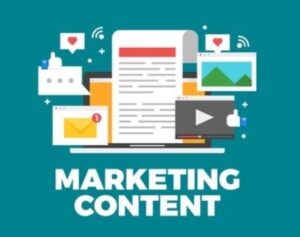Last updated on October 3rd, 2024 at 06:05 pm
Telemarketing Lead Generation is one of the fundamental pillars in the vast landscape of marketing. For years to come, it has served as the lifeblood of businesses across industries.
Whether you’re a budding entrepreneur or an experienced marketer, understanding Telemarketing Lead Generation inside out is crucial to continued growth and success.
This article guides you through an in-depth look into Telemarketing Lead Generation, its spectrum, strategies, and its significance in digital marketing. It will put a special focus on different sectors that deal with lead gen regularly.
What is Really Lead Generation?
In essence, lead generation involves finding people who may be interested in buying your product or service. It starts with capturing their contact information so that you can approach them later.
These potential customers are termed as leads and they usually provide their contact information. Basic info such as email addresses and phone numbers in order to get something valuable like e-books, webinars, or newsletters.

Telemarketing Lead Generation serves as the connection between marketing and sales by nurturing prospects to conversion. hence, it is an integral part of keeping business afloat.
What Goes Into Generating Leads?
Telemarketing Lead Generation marketing demands a targeted approach that meets your target audience’s needs and aligns with your business objectives. Below, are some ways to go about with Telemarketing Lead Generation.
- Content Marketing- Create content that will speak directly to prospect’s needs and complaints. For example, blog posts, videos, and infographics.
- Inbound Marketing – Optimize your website for search engines, engage in social media marketing activities, and offer valuable resources all these attract leads organically.
- Email Marketing – Build an email list where you send tailored messages to prospects at different stages of their buyer’s journey.
- Social Media Marketing -Facebook adverts, LinkedIn connections, and Twitter followers are examples of good platforms that can help you interact with potential leads through targeted advertisements and engaging content.
- Lead Generation Forms: Embedding forms for collecting contact details from visitors interested in what you have displayed on your land pages.
- Paid Advertising: Through Google Ad or Facebook Lead Ad, run campaigns like PPC ads or paid campaigns to inform more people about your landing page.
How Does Lead Gen Work in Digital Marketing?
In the ever-changing world of internet advertising, Telemarketing Lead Generation is not a mere strategy. It is rather a complex tango involving technology, data, and consumer behavior.
Let’s explore how companies use digital media to generate leads more effectively.
What are the Telemarketing Lead Generation Specifications in Digital Marketing?
Data-Driven Targeting:
Marketers have access to vast amounts of data on digital platforms that they can use to find their ideal audience. Businesses can use demographics, interests, online behaviors, and even past interactions as basis for individualizing their communication with potential customers.
Multi-Channel Approach:
With digital marketing, there is no shortage of channels where you can intersect your prospective leads. By adopting a multi-channel approach, businesses are able to reach prospects at different stages of their online journey thereby increasing conversion rates.
Real-Time Optimization:
Unlike traditional marketing channels, digital platforms allow instant tracking and optimization. Real-time performance monitoring enables marketers to adjust targeting parameters, change ad creatives, or even reallocate budgets.
Personalization at Scale:
Using sophisticated marketing automation tools and data analytics software allows businesses to deliver customized experiences in bulk. Personalization creates a deeper bond between marketers and clients. Personalized email campaigns or dynamic advertisement content increases prospect involvement rates.
SEO:
Having a good rank on search engine results is of great importance as it helps to attract natural traffic and you generate leads. In this way, companies can become more visible and pull in qualified prospects that are actively seeking their products.
PPC Advertising:
Pay-per-click advertising allows businesses to bid for ad space on search engine results pages and other digital platforms. The use of relevant keywords and demographic targeting will drive traffic to specific landing pages.
Content Marketing:
Content remains king in the digital realm. Whether it’s videos, blog posts, infographics, or podcasts – valuable content creates a reputation and wins trust with consumers.
Social Media Marketing:
Social media platforms have highly targeted lead generation options using interactive ad formats. Through interesting content marketing material, focused ad creation, and prompt community engagement, brands can capture leads over time while maintaining meaningful relationships.
Email Marketing:
Email marketing has remained a significant part of digital lead generation despite the emergence of other communication channels. Companies can nurture prospects through personalized email campaigns that deliver value-added content. This then speeds up their journey across the sales funnel till they convert.
Marketing Automation:
This means is used by marketers for better lead generation automation like based upon segmentation-triggered communication. Marketers should be focusing on strategic initiatives instead of wasting time performing repetitive tasks. Therefore, integrating automation should be a priority to optimize campaign performance.
How Does Lead Generation Work in Real Estate?
Real estate lead generation is complex due to its unique nature. Here, properties are sold rather than products or services offered.
Thus, it differentiates buyers from sellers who have distinct needs. Trust, valuable information, and a variety of channel connections are the key to successful lead generation in this industry.
Let us go deeper into the strategies and tactics that are tailor-made for lead generation in real estate:
1. Targeted Advertising:

Use targeted advertising on platforms such as Google Ad and Facebook to get to people actively searching for property or real estate services. These platforms allow you to target your ads using locations, interests, and behaviors guaranteeing that your ads reach out to the most relevant people.
2. Real Estate Websites and Portals:

To enhance online visibility, list properties on popular real estate websites and portals. This means your listings should be detailed. Feature quality photos where possible along with virtual tours to make properties more visible attracting potential buyers.
3. IDX Integration:

Integrate an Internet Data Exchange system into your website. This way, visitors can easily view up-to-date property listings from the Multiple Listing Service. Doing this enables prospective buyers to search for properties directly through your site, facilitating the capture of leads who show interest.
4. Content Marketing:

Develop informative content that meets the needs of buyers and sellers alike. For example, blog posts articles, or videos can cover topics like home purchasing tips, local market trends, or neighborhood profiles. Also, encourage visitors to sign up for email updates or follow you on social media channels for future engagement.
5. Lead Magnet:

Another method of acquiring contact details of prospective clients is to provide them with useful materials like ebooks, guides, and market reports. For instance, you could create an eBook titled “The Ultimate Guide to Buying Your First Home” or a comprehensive report on the local housing market. Such lead magnets can be promoted on your website, social media pages as well as email marketing campaigns.
6. Networking and Referrals:

Building strong relationships with other professionals in real estate such as mortgage lenders, home inspectors and attorneys are key points. Active engagement in local networking events like industry associations or community organizations will help you grow your circle of contacts which means more referrals for you.
7. Open Houses and Events:

Open houses and informational events can be used to showcase properties as well as interact with potential buyers and sellers. Create an environment that allows visitors to open up about their property, and visit experience while answering all their queries relating to the buying/selling process through a Q&A session. Collecting contact information from attendees is important so you may follow up using personalized communication.
8. Client Testimonials and Reviews:

To show how satisfied your customers are with the services rendered it’s worth displaying testimonials from them on your web page or social media profiles. This will help increase trust towards potential customers who have not made up their minds yet. You can encourage past clients to write reviews sharing their experiences as well as recommendations for attracting new leads.
How does B2B lead generation work?
Generating leads for B2B is very important in business growth as it forms the groundwork of sales pipelines and long-term prosperity. Understanding and implementing effective strategies can significantly enhance lead generation initiatives. Here’s a brief way on how to generate B2B leads.
1. Optimize Your Website for Lead Generation
Your website often serves as a first contact point with your potential customers. This means that it should be easy to use, contain relevant information, and be optimized for search engines.

Creating specific landing pages with transparent calls to action tailored to collect visitor details works well. To change visitors into leads, you can give them valuable content such as whitepapers, eBooks, or case studies.
2. Content Marketing
Content marketing is a powerful tool that attracts B2B leads. Creating high-quality informative content that addresses the pain points and interests of your target audience. That way, you can establish yourself as a thought leader in your industry.

Engaging audiences through blog posts, webinars, infographics, and videos also does wonders in enhancing brand visibility and engagement. Inserting SEO best practices into your content will improve your search engine ranking making it easier to find potential clients.
3. Email Marketing
Email marketing is one of the most effective ways of generating B2B leads. Segmenting your email list enables you to send targeted personalized messages to different groups of people.

Sending newsletters regularly, promoting offers periodically, and updating consumers about new products heighten their awareness about your enterprise.
4. Social Media Marketing
For B2B, social media marketing is an important aspect of lead generation. LinkedIn is best for a professional audience and making connections with future leads.

Here, you can share valuable information regularly, participate in industry discussions, or use the platform’s advertising options to attract and nurture leads. You can enhance the B2B brand awareness through platforms such as Twitter and Facebook.
5. Paid Advertising

Investing in paid ads will greatly boost your lead-generation efforts. Pay-per-click campaigns on Google Ads as well as on social media platforms can effectively drive traffic to your website or landing pages. You may also consider retargeting ads which are aimed at users who have visited your website before since they can be useful for converting interested visitors into leads.
6. Networking and Events
By participating in industry events, trade shows, and conferences, one can connect with potential clients face-to-face. It will help you build personal relationships and trust if you interact with others during these occasions. Additionally, hosting webinars or virtual events allows you to showcase your expertise and attract leads from a wider geographical area.
7. Lead Magnet and Gated Content
Providing lead magnets – valuable resources in exchange for contact information – is a tried-and-true method of generating leads. As mentioned in early paragraphs, things like eBooks, whitepapers, case studies, or exclusive access to research reports. By requiring users to fill out a form before accessing gated content helps capture lead information while providing value.
8. Analyze and Adjust:

Lastly, evaluate your lead generation efforts consistently. Monitor campaign performance using analytics tools to determine what works best and what does not. Timely reviewing strategies and making changes based on data ensures that you are getting the most out of your efforts.
How Does Life Insurance Lead Generation Work?
In the insurance industry, life insurance leads are important for financial security, revenue growth, and client relationships. It is very important to keep generating high-quality leads to sustain and grow your business.
With many lead generation strategies available, it is important to know how to navigate through them strategically in order to attract qualified leads that convert into valuable clients. Here are some:
1. Creating Demand Generation Campaigns
Demand generation campaigns aim at creating awareness and interest in your life insurance services. Utilize various forms of content marketing such as social media engagement including targeted advertising methods which include Google Ad.
You have to try to reach out to your audience with your messages. Make sure you tailor your messaging so that it addresses the pains or needs of your target market.
2. Leveraging Sales Team Expertise
Your sales team plays a crucial role in this life insurance lead generation exercise. Give them the necessary training and resources that will enable them to effectively engage with prospects. Encourage proactive outreach and follow-up activities that would assist in nurturing leads through the sales funnel.
3. Nurturing Marketing Qualified Leads:
Marketing qualified leads are people who have shown interest in what you offer but are not willing or ready yet to make a purchase decision just now. To remain engaged with MQLs as well as move them towards conversion, implement lead nurturing campaigns including email drip sequences featuring personalized content.
4. Utilizing Outbound Lead Generation Tactics
Outbound lead generation is when you reach out directly to potential clients themselves. Such activities may entail cold calling, email outreach, and networking events. Have a compelling message that focuses on the value proposition of your life insurance products and services.
5. Creating Irresistible Lead Magnets
A lead magnet is an incentive or valuable resource that prospects receive upon providing their contact information. Such lead magnets can be developed into ebooks, whitepapers, webinars, etc.
These offer detailed insights into life insurance and financial planning. These must address common pain points offering actionable solutions in return.
6. Optimizing Conversion Paths
Make conversion paths on your website and landing pages more streamlined to capture leads effectively. Put clear and concise calls-to-action (CTAs) on your page as you also look at how you can reduce form fields to prevent friction. Continuously optimize performance by testing various elements of your conversion paths.
7. Tracking and Analyzing Results
Key metrics such as conversion rates, cost per lead, and lead quality are important when monitoring the performance of your lead generation efforts. Analytics tools provide insights into different strategies’ effectiveness that have been used so far and the channels where these strategies were implemented. Use this information to improve your strategy while also optimizing for resource allocation purposes.
Must Check: B2B Lead Generation Work?
How to Get Into Generating Leads as a Car Salesman?
Now. before one can boast about how commercials are enough to bring in car fanatics, that isn’t exactly the case. Unless you are selling absolut high-ends.
Hence, you must know what goes into reaching a car brand to the common people. So, let us see how you can do so:
- Pinpoint Your Target Market: The initial step in generating leads is to know who you are targeting. Identify the demographics that align with your cars, such as age groups, income levels, or lifestyle choices.
- Digital Marketing Strategy: An online presence is vital. Create a strong website and use social media platforms to increase brand visibility. Utilize target advertising so as to reach potential buyers already interested in buying cars.
- Lead Capture Techniques: Use forms on your web page to collect visitor’s information. For example, you can provide incentives such as free test drives or discounts for signing up. Ensure that these forms are easy to fill out so as not to lose any prospective clients.
- Content Marketing: Make content that is valuable and answers frequent questions or concerns about purchasing a vehicle. Car and car maintenance blog posts, videos, and infographics among others may be used along the customer journey so as to nurture leads. Start by providing useful information at different stages of the decision-making process.
- Host Events and Webinars: Physical/virtual events can attract new leads while also positioning yourself as an expert within this industry. Offer workshops like car maintenance advice sessions which will build trust with your target audience.
- Follow-Up: Some leads do not buy immediately. Therefore, implement follow-up systems through email marketing and phone calls ensuring that you remain their best option even after some time has passed. Since they first showed interest in what you offer them, you must stay on top of mind awareness.
What Goes Into Creating Solar Leads?
Now, moving on more to the environmental side of business, we know how in-demand solar panels are, right? The market for cheap and easily accessible renewable energy sources is booming.
So, what can you do as a salesperson to sell the idea of solar electricity to common people? Here’s what:
Find Your Target Prospects:
Usually, solar panel users share certain characteristics such as being environment friendly, having a long-term savings mentality, and owning a home. Design your marketing initiatives in such a way that they cater to these prospects and their living standards.
Informative Content:
Provide educational materials on the advantages of solar power, installation procedures, and cost-saving measures. Blogs, newsletters, and videos can help transform interested persons into product-qualified leads.
SEO & PPC Campaigns:
Make your website more visible on search engines to attract natural traffic. Pay-per-click campaigns may also be used to target specific keywords related to solar energy which will drive high-quality leads towards your site.
Partner with Local Businesses:
Collaborate with real estate agents, home improvement stores, and environmental organizations so as to reach out to new markets. Such alliances may grant access to pre-qualified leads.
Social Proof:
Display testimonials and case studies from happy clients. Positive reviews and success stories can greatly foster trust as well as improve the quality of leads received.
Targeted Email Campaigns:
Divide your email list according to where prospects are in relation to becoming customers. Customize messages based on specific concerns raised thereby nudging leads closer towards becoming qualified sales.
Networking Events:
Attend/host local gatherings centered around sustainability/green living. Through these events, you get an opportunity to meet potential clients face-to-face while explaining solar energy benefits.
Monitor & Adjust:
Keep monitoring how effective various lead generation marketing strategies are performing over time. Utilize analytics in identifying what works best then modify the approach so as to enhance lead quality with each passing day.
So, Must You Consider Lead Generation for Different Sectors of Businesses?
Lead generation, in today’s world, is far more digitalized and individualized to demands. The aspect of gathering prospects no longer depends on face-to-face convincing any longer.
We have marketing efforts that transcend boundaries, from age-definitive to income levels, and everyone has access to all sorts of products and services. Hence, we can conclude that sales work is getting much more easier through the Internet. Not to mention, that makes the work of lead gen easier too.
The key, at the end, is to keep comparing your results with the standard set. Tracking and analyzing outcomes is what brings deviations in check.

